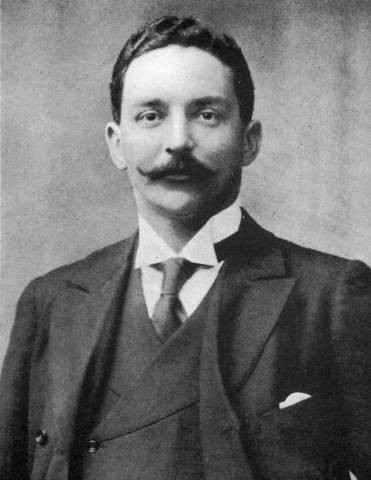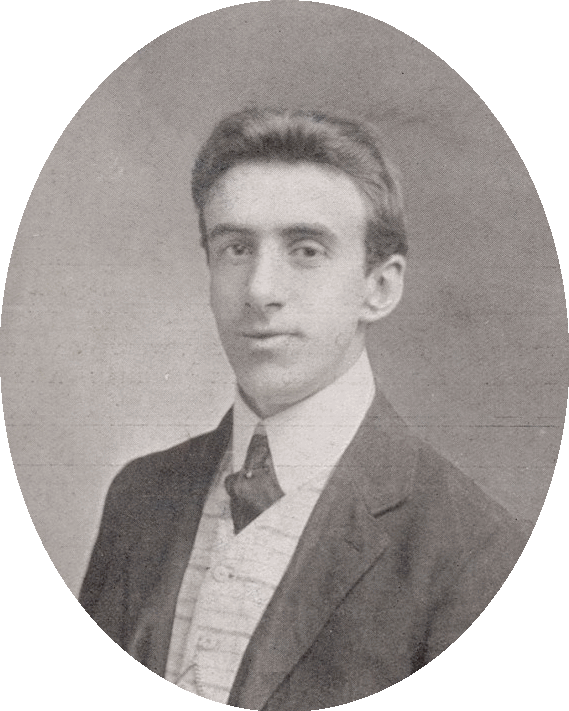The Stories
The RMS TITANIC was both an artifact of human nature and, by virtue of all those aboard during her short voyage, a microcosm of humanity, all bent for different reasons on crossing a winter ocean. Among them were Jews fleeing the Russian pogroms, Irish and Slavic immigrants, a man of African descent traveling with his family, a legendary seven-member band led by violinist Wallace Hartley, seamen and a shipping magnate. They were the wealthy, the middle-class, and the poor—all ultimately reclassified as merely lucky or unlucky.
The Passengers
Embed from Getty ImagesAlthough advertisements for TITANIC targeted the upper class, promoting her spacious accommodations, opulence, and luxurious amenities, her most profitable passengers were emigrants traveling in Third Class. They provided the highest occupancy rate and greatest revenue for the White Star Line.

John Jacob Astor IV, Business Tycoon
John Jacob Astor IV, American business tycoon, was also the author of science fiction novels about life on other planets in the year 2000, and an amateur engineer. He escorted his pregnant wife, her maid, and a nurse into a lifeboat. His badly injured body was identified by initials sewn into his jacket and personal effects.

Bruce J. Ismay, Shipping Magnate
As chairman of the White Star Line, J. Bruce Ismay conceived of TITANIC and her sister ships in 1907. Ismay survived the sinking and was savaged by the press for leaving women and children behind, becoming the subject of a scathing poem, “Master and Man.” He fell into deep depression from which he never recovered and died a tormented man.

Wallace H. Hartley, Band Leader
Wallace Hartley was introduced to music as a choirboy in his local church in England. After playing with several orchestras, he found employment on ocean liners as a band leader. As TITANIC foundered, he and his band played to the end to keep spirits up. His violin, a gift from his fiancée Maria Robinson, was found strapped to his body, which was returned to his home in England. Thousands lined the route of his funeral procession. His violin sold for $1.7 million at auction. Watch the trailer for Betrothed, in which Maria remembers her time with Wallace, responding to various moods in the measures of "Songe d’Automne" and cherishing her imperishable bond with Wallace.
Reflections
"Such a biting cold air poured into my stateroom that I could not sleep, and the air had so strange an odor, as if it came from a clammy cave. I had noticed that same odor in the ice cave on the Eiger glacier. It all came back to me so vividly that I could not sleep, but lay in my berth until the cabin grew so very cold that I got up and turned on my electric stove. It threw a cheerful red glow around, and the room was soon comfortable; but I lay waiting. I have always loved both day and night on shipboard, and am never fearful of anything, but now I was nervous about the icy air.”
With this foreboding, First Class passenger Ms. Elizabeth Shutes recalled the night of the collision for the British Government’s inquiry into the disaster. She describes her impressions while heading to the boat deck, recounting happier social events earlier in the evening. There was no panic, as there was little hint of danger. But then, very surely, the ship revealed the extent of her mortal wound, and an urgency made itself felt. Wary and distrustful, Ms. Shutes overheard an officer say, “We can keep the water out for a while.” She boarded a boat, and commented on the brave men who saw her into the boat. They stayed behind and perished with the ship. One was Mr. Washington Augustus Roebling II, the nephew of the builder of the Brooklyn Bridge.
Folk Legends
It was midnight on the sea,
Band playin' "Nearer My God to Thee"
Cryin', "Fare thee, Titanic, fare the well, "
Titanic when it got its load,
Captain hollered, "All aboard, "
Cryin', "Fare thee, Titanic, fare the well, "

Leadbelly
Thus wrote blues guitar legend Huddie Ledbetter (aka Leadbelly) about TITANIC. Performed in 1912, Leadbelly combined fact with fiction. To emphasize Jim Crow laws, he conceived a tale whereby the prominent and wealthy heavyweight boxer Jack Johnson was refused passage on TITANIC because he was a Negro. This emphasized the belief, accepted with justification by many Black Americans, that no matter how accomplished or prominent a Black American might be, the color of their skin would be the determining factor in the treatment they received.
Initial passenger accounts, some wildly inaccurate, added to the mythology of the sinking. Many embellished and fabricated stories. One claimed to have seen the iceberg an hour before the collision; another claimed to be riding an ice floe for hours before being rescued; others witnessed men being “shot down like dogs”; newspapers concocted the tale of the Negro stoker attempting to steal the senior wireless operator’s lifejacket, only to be killed by the junior wireless operator. Captain Smith, the ship’s Master, had various endings: dying by suicide, cheering encouragement to men on an overturned lifeboat, or saving a baby from the sea.
The Press and Popular Culture
Popular culture put its own twist on the TITANIC. Nearly twenty films, documentaries and stories based on the sinking have been made about the disaster. The first three were made in 1912, shortly after the tragedy. The first, “Saved From the TITANIC,” was filmed a month after the ship sank. It was written by and starred one of the survivors, Dorothy Gibson, who was an actress of the day. The film was lost in a fire, and only a few stills remain. Countless books and articles have been published since the disaster, along with several poems, most noteworthy being Thomas Hardy’s “Convergence of the Twain.”

